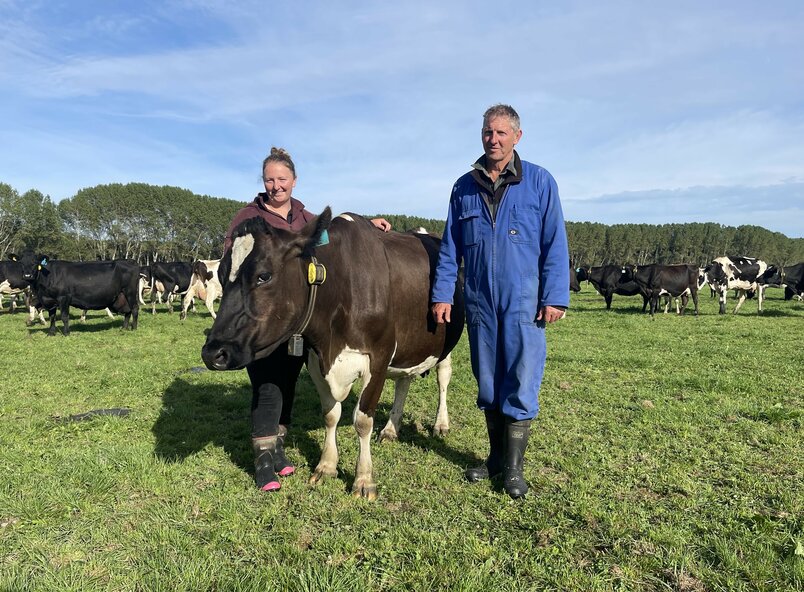Sarah Woodley likes to run her shed with just one person all year-round. The farm manager is in her third season on the 118Ha Clandeboye farm in South Canterbury where she milks 420 predominantly Friesian cows through a 50-bail Rotary with two other full-time staff.
It’s a tightly run ship on the small dairy property that has been in the Woodley family for four generations. And, with good staff in short supply it’s also about building an enjoyable place to work day-to-day and sustaining that over the long term. Sarah says her basic aim is to have two people working on farm and one person on a day off. “In the mornings, one person will be up early to start at 4:30 a.m., and the next person will have a sleep in and be up at seven. No one is up for days on end at 4 o’clock in the morning. “Obviously collars make that possible over mating.”
Four seasons ago, Mark Woodley, Sarah’s father and the farm owner, invested in collars when his long-term farm manager retired. Sarah was still finishing up on another contract. She returned to the home farm, and last season they changed to Datamars Livestock’s Tru-Test Active Collars.
“Dad and I do all the AI for 12 weeks. We are doing AI twice a day. In the morning, we manually draft the cows we want to AI and leave those early ones for the afternoon. The system is identifying cows on heat, and picking silent heats that staff would miss because the cows are not bulling or showing any other signs. The collars are definitely doing their job.”
Sarah says the Active Collars make it easier for staff as well. The data gateway reads out to 1000m, or more in some instances, so data from the collars is uploaded for paddocks in range and as animals approach the shed. Even though the Woodley farm has high shelter belts on much of the property for shade and wind protection, this doesn’t compromise the upload speed and the data is available instantly when the Woodley’s herd comes in for milking. With the previous brand of collars, it wasn’t quite as simple.
“In the past, we had to get the cows in half an hour early in the morning just to get them to stand in the yard and wait for the data to download– which is not ideal for staff or cows.” Now the focus is on milking. There’s no waiting and there’s no one needed up in the shed picking cows every day for 12 weeks. Everyone on the farm has instant access to a whole scope of heat and health information from the Datamars app, and if there’s any questions, Sarah says the back up support from the Datamars team is “awesome”.
“Dad is not overly computer-minded but he has the app on his phone and he is always on it to see what’s happening and who is on heat. Our main find is early detection of calving issues, and when we have the vet out to look at a sick animal, they will view the health data to check rumination and all sorts. It has been very helpful.”
“We are generally very good at picking up mastitis. We strip a quarter a milking, so we are picking up anything early before an animal gets sick – but for farms that don’t do that, the collars would signal mastitis and lameness too.” Over mating, Sarah is adamant that the Active Collars have saved the Woodleys a lot of time and money. “We haven’t had to bring relief staff into the shed over mating. We don’t use tail paint, we rely solely on the collars, and we don’t scan either. This year, we will be using the collars to tell us who is pregnant and who is not. That may only be a small cost saving – but why spend it if you don’t have to? On top of that, pregnancy scanning is fairly invasive for the cows.”
Bulls are also off the shopping list. “We are not buying bulls. We used to get quite expensive short gestation Hereford bulls and they were getting up to $4000-5000 each, and for staff it is a lot safer not having to deal with bulls in the herd.” Overall, the Active Collars have given Mark and Sarah
a sense of freedom knowing a critical job is being done well and consistently and they can focus on running a smooth operation. “Cows are getting in calf for sure,” says Sarah. “We are trusting the collars and know they are not going to miss something, and that’s taking the stress off me and Dad as well. It has been very good.”
